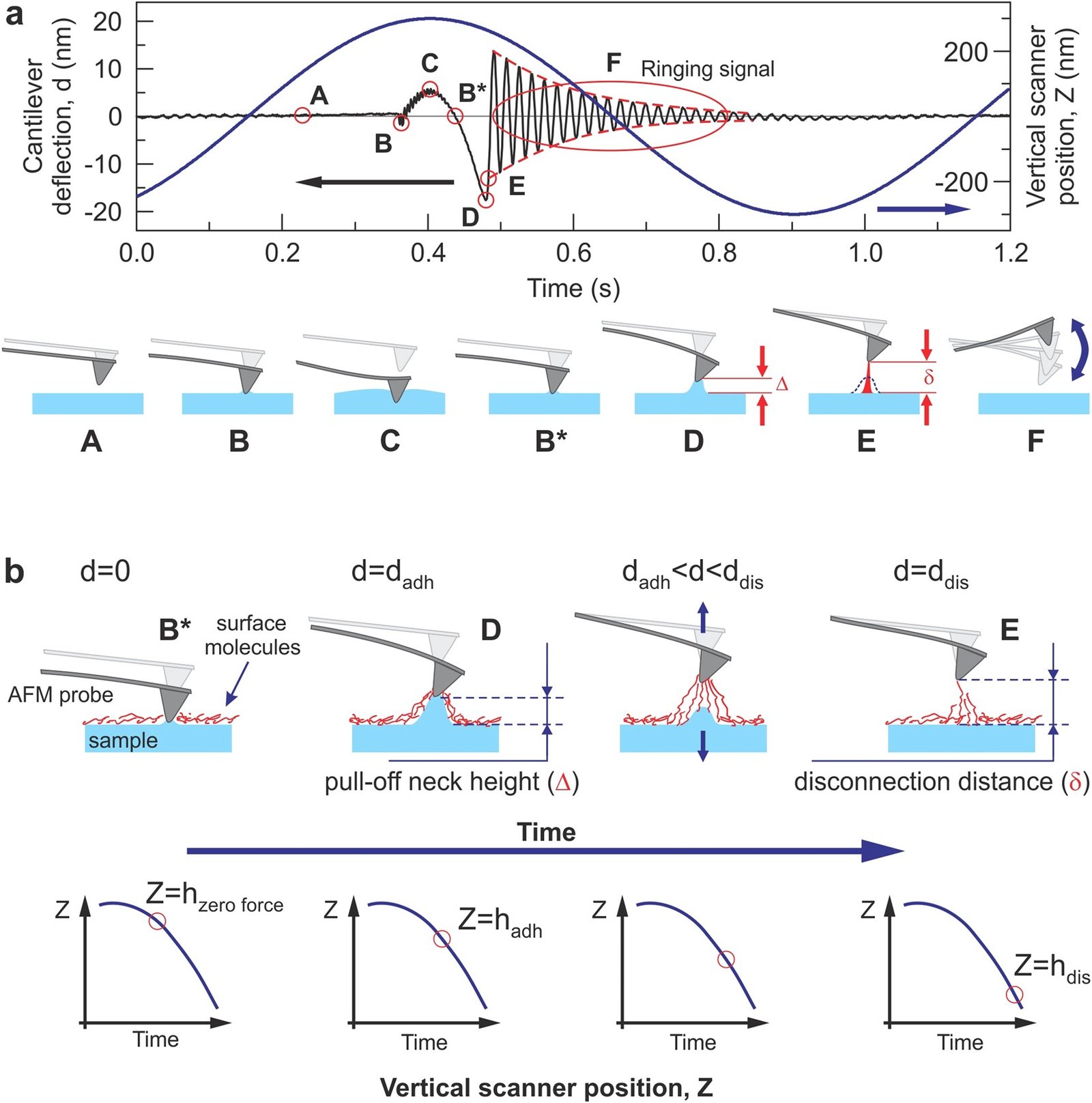Questions & Answers
about Nanoindenting AFM Extension
Both modes allow measuring the storage and loss moduli.
- FT-nanoDMA has higher spatial and temporal resolution because FT-nanoDMA measures storage and loss moduli simultaneously at multiple frequencies, while Bruker’s nanoDMA measures them sequentially. Note that simultaneous measurements are not only faster, but also allow measurements to be completed without having to wait for the contact area to stabilize (creep). This increases the speed of measurements, allowing information to be collected from a smaller contact area compared to Bruker’s nanoDMA, i.e. achieving higher resolution.
- By design, FT-nanoDMA has virtually no sample size limitations. For example, FT-nanoDMA makes it possible to measure mechanical properties of cells directly in a Petri dish. When working with polymers, the sample size can be a dozen of centimeters and several centimeters thick. But there is a drawback. The current version of FT-nanoDMA does not allow direct measurements at frequencies above 500 Hz.
- When measuring mechanical properties of samples, measurements at all frequencies are taken at the same exact conditions of the sample at the same area of contact between the AFM probe and sample. This is important for transforming samples, such as rapidly changing polymers, biological cells. As a result, sufficient estimate, accumulation gradient and frequency loss can be obtained. So, it is possible to get unique information, the gradient of the storage and loss moduli with respect to the frequency.


